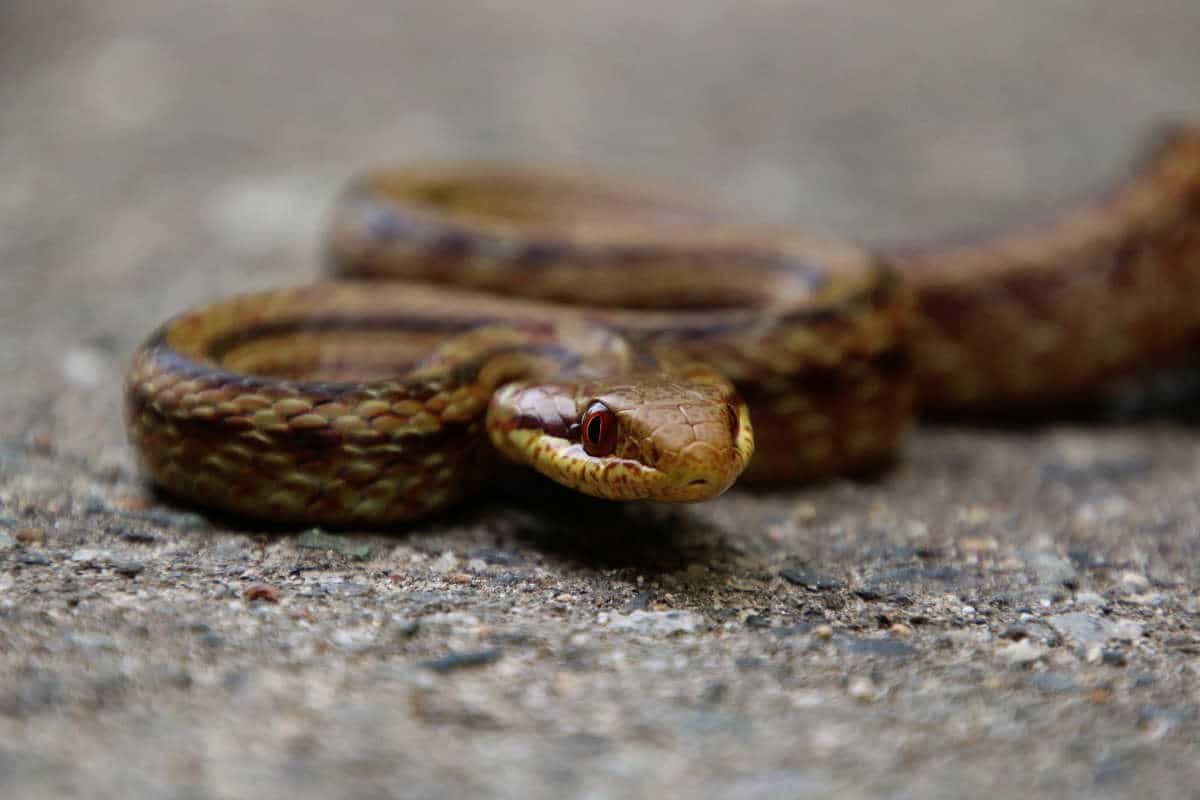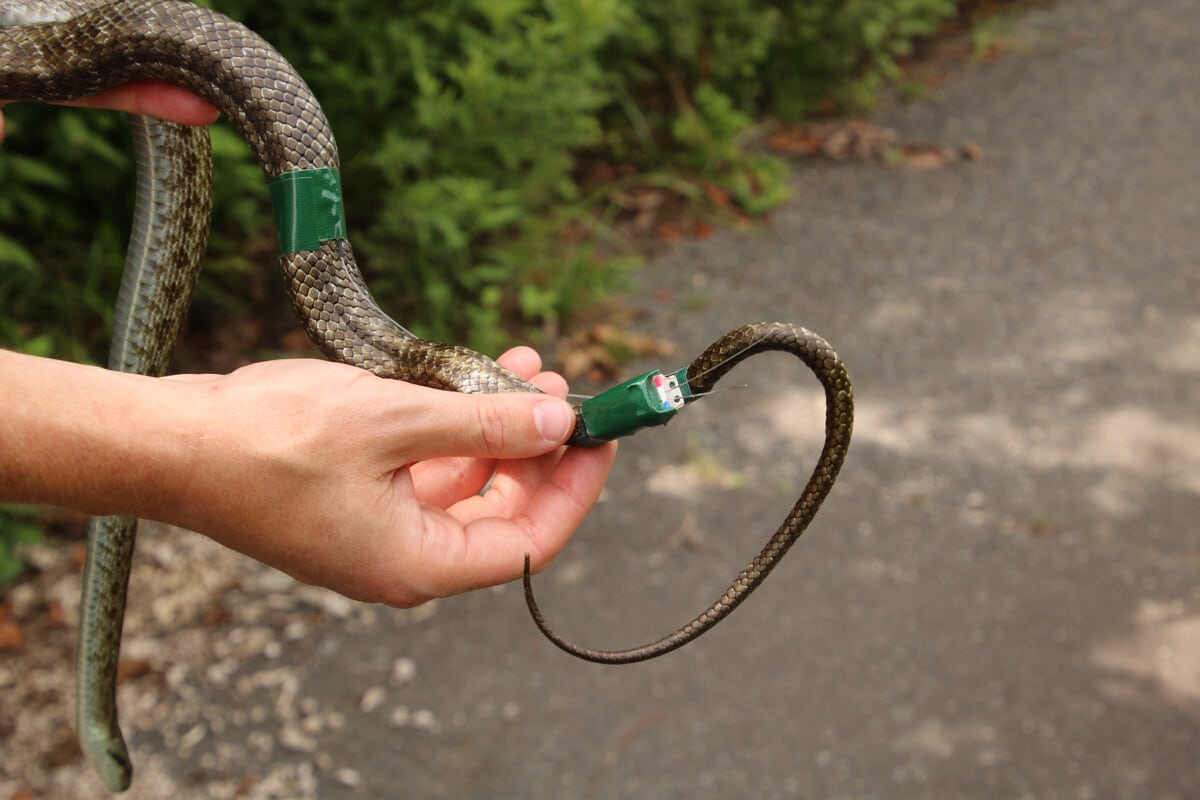
By studying how specific animals behave in contaminated landscapes, we are gaining more and more insight into the environmental impacts of such major nuclear disasters.
You probably remember the Fukushima nuclear disaster in 2011. A seaquake and subsequent tsunami caused major problems that damaged the Japanese nuclear power plant. It resulted in a nuclear disaster that released a lot of radioactive radiation, forcing people to leave the area in a hurry. But now, ten years after the nuclear power plant spewed dangerous radioactive radiation over the area, researchers are taking the current state of affairs. Because how polluted and harmful is the area for the animals that – unlike humans – still live there?
Snakes
In the study, the researchers used snakes living in the abandoned area to measure radioactive contamination in the Exclusion Zone in Fukushima. Rat snakes are a common species in Japan, traveling short distances (only about 65 meters per day) and can accumulate high levels of radioactive materials. Due to their limited movement and close contact with the contaminated soil, these snakes are very useful for determining the degree of radioactivity in the studied zone, according to the researchers.
Bio-indicator
The researchers argue that the snakes – like canaries in a coal mine – could act as ‘bio-indicators’ to measure the remaining radioactivity in the region. In this way they can reflect the health of an ecosystem. “Radioactivity in Fukushima varies widely across habitats and forest types,” researcher James Beasley explains Scientias.nl from. “This means that where an animal spends time has a significant impact on the amount of radiation it is exposed to. To understand where the rat snakes are in the Exclusion Zone and their radiation exposure, we attached GPS trackers to nine snakes. Each tracker also had a small chip that measures the total radiation dose the snake was exposed to. That way we got a good idea of their movements and exposure to harmful radiation.”

A Japanese rat snake is equipped with a GPS tracker that allowed researchers to track its movements for weeks. Image: Hannah Gerke
The trackers allowed the researchers to physically locate a snake every few days. In addition, the trackers even revealed whether a snake was on the ground or in a tree. Working in the hilly rugged terrain of abandoned villages and farms, the team located snakes in trees, grasslands, babbling brooks and roadsides.
Abandoned sheds
Where most snakes used to hang out? Remarkably, the researchers found the snakes most often in deciduous forests, along forest edges and in abandoned buildings. They avoided dense coniferous forests. “More than half of the tracked snakes spent time in abandoned sheds,” said researcher Hannah Gerke. “This may protect them from the radioactivity in the surrounding soil.”
Radiation dose
It means that the behavior of the animals has a major influence on radiation exposure and the accumulation of pollutants. “For example, a snake that spends most of its time in treetops, away from the contaminated soil, will be exposed to less radiation than a snake that mainly lives on the ground,” Gerke explains. Scientias.nl from. “We then used data collected by the radiation dosemeters to estimate the potential radiation dose for a larger number of radioactive snakes as well; both inside and outside the Exclusion Zone.”
Surroundings
The researchers found that the lion’s share – about 80 percent – of a radioactive snake’s total radiation dose comes from its environment, because it slides on the ground or hides underground. The other 20 percent accumulate in a snake because of what it eats. “We then used models to map how the time a snake spent in a particular spot (underground, on the surface, or in a tree) affects the radiation dose,” Gerke says. “We found that every minute spent underground (surrounded by radioactive soil) dramatically increased the radiation dose. In fact, this was a lot bigger than the slight drop in radiation dose we measured when a snake perched high in the trees.”
winter months
While that sounds logical, it’s an interesting insight. It means that the radiation exposure of individual snakes varies greatly due to differences in habitat – does it seek out abandoned sheds, or forests – and whether a snake spends more time on the ground or in a tree, for example. “This confirms the idea that the accumulation of radioactive substances in snakes is influenced more by the local radiation levels and less by, for example, the species, sex or body size,” says Gerke. In addition, this means that the risk of exposure increases considerably during the winter months. In winter, snakes normally seek shelter underground, close to the more heavily polluting soil. “The question is how much radiation snakes receive when they take refuge underground in winter,” Gerke says. “This is certainly a topic that should be studied in future research.”
Effect on snakes
Thanks to the study, we are getting a better picture of the effects of dangerous radiation on snakes. “Compared to other groups of animals such as mammals, we actually know little about how chronic radiation affects reptiles or what levels are harmful to them,” explains Gerke. “This research aims to draw attention to that lack of knowledge. In addition, it provides a baseline that can help us determine how much radiation the snakes are exposed to as they move through their habitat. This also allows us to make better estimates of the radiation dose. And that can be used in future research to determine the potential health risks for snakes.”
Overall, the study provides more insight into how specific animals behave in contaminated landscapes. And this also helps us to better understand the environmental effects of major nuclear disasters, such as those in Fukushima or Chernobyl. “Learning more about radioactive rat snakes will also give us a better idea of the possible consequences of the 2011 nuclear disaster,” Gerke says. “And that way we can also contribute to the conservation of this species.”
Source material:
“Using snakes to monitor Fukushima radiation” -University of Georgia
Interview with James Beasley and Hannah Gerke
Image at the top of this article: Hannah Gerke